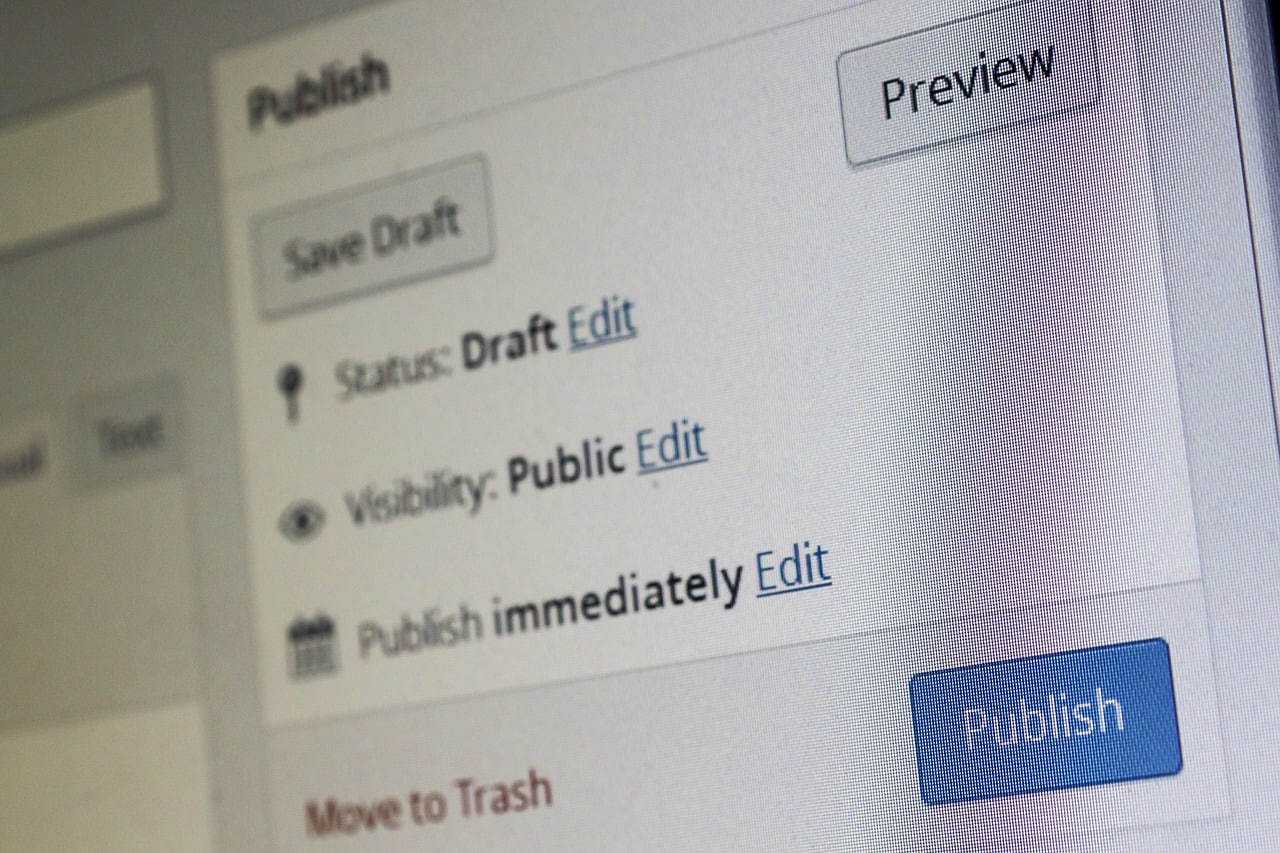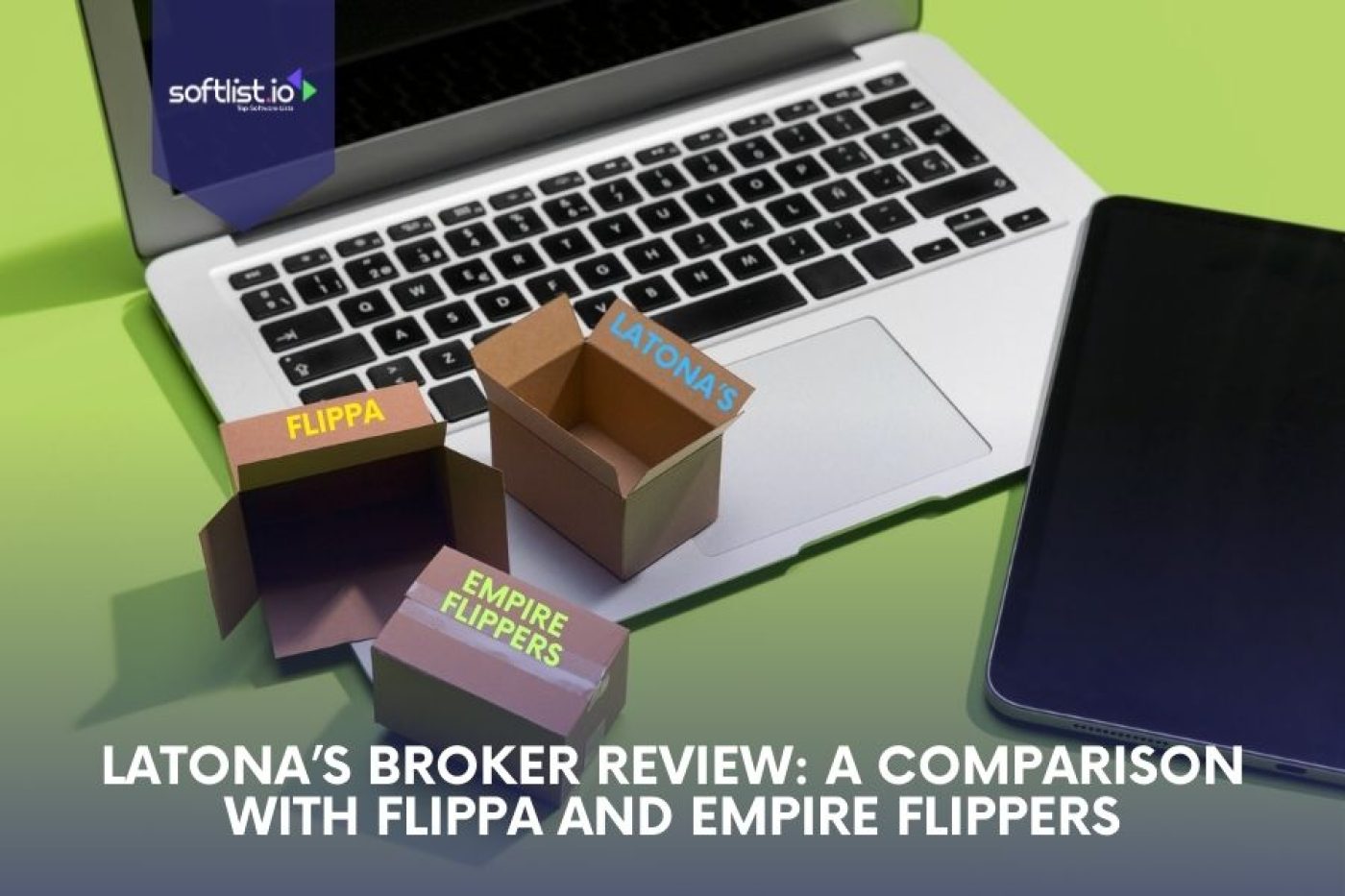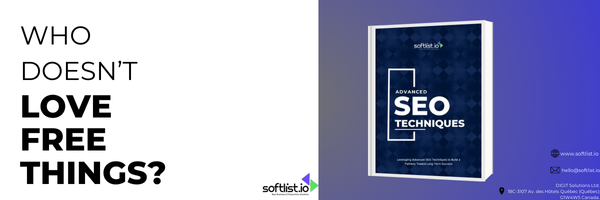Are you looking for a reliable and user-friendly content management system (CMS) that can help you to manage your online content? With so many different options available it can be hard to decide which platform is right for you.
This guide will provide an overview of the best content management system platform for managing content, so you can make an informed choice when selecting the right one for your needs. Whether you are a developer, webmaster, or business owner, you’ll find the perfect content management system platform for creating and managing your online content.
What is a Content Management System Platform?
A CMS (Content Management System) platform is a software application or set of tools that allow individuals and organizations to create, manage, and publish digital content on the Internet without requiring extensive technical knowledge or coding skills.
It serves as a centralized platform where users can organize, edit, and publish content, such as text, images, videos, and other multimedia, on their websites or digital properties.
The primary purpose of a content management system platform is to simplify the process of content management, making it more accessible to a broader range of users, including non-technical individuals. With a CMS, users can focus on creating and delivering content without getting bogged down in the technical complexities of web development.
It’s a good solution for those who want to have an online presence without dealing with the intricacies of coding and website development.
Key features of a content management system platform typically include:
- Content Creation and Editing
CMS platforms offer easy-to-use interfaces that allow users to create and edit content using familiar tools, similar to word processing software.
- Content Organization and Management
Content can be organized into categories, tags, and various hierarchical structures to ensure a structured and easily navigable website.
- User Roles and Permissions
CMS platforms often support multiple user roles, such as administrators, editors, authors, and contributors, each with different levels of access and permissions to manage the content.
- Publishing and Scheduling
Content can be published immediately or scheduled for future release, allowing for efficient content planning and management.
- Media Management
CMS platforms typically include media libraries to store and manage images, videos, documents, and other multimedia files.
- Responsive Design
Many modern CMS platforms are designed to create responsive websites that adapt to different devices, ensuring a consistent user experience across desktops, tablets, and smartphones.
- Themes and Templates
Content management system platform offers a wide range of pre-designed templates and themes— there’s a huge selection available—enabling users to change the look and feel of their websites without altering the content.
- Plugins and Extensions
Most content management system platform supports plugins or extensions that extend the platform’s functionality, adding features such as SEO optimization, social media integration, analytics, and more.
- SEO-Friendly
A good content management system platform allows users to optimize their content for search engines by providing fields for meta tags, URLs, and other SEO-related settings.
How Much Does it Cost?
The cost of a content management system platform varies; while some are entirely free, others require a monthly fee. Even with free CMS platforms, additional expenses may arise from third-party extensions, designs, or web hosting services.
It is crucial to thoroughly research the pricing details before making your CMS selection to avoid any unexpected costs. With this consideration in mind, let’s explore the top CMS platforms to help you make an informed choice.
Best Content Management Software this 2023
1. Shopify
Shopify platform is one of the best for e-commerce, especially if you’re looking to set up an online marketplace. It is a comprehensive and fully-hosted CMS platform that eliminates the need for purchasing hosting, installing software, or managing updates and backups.
With its user-friendly drag-and-drop interface, Shopify enables seamless in-store sales, making it particularly beneficial for businesses with both physical and online stores.
Advantages:
- Embracing Shopify’s integrated payment solution, Shopify Payments allows convenient acceptance of credit and debit cards, and it also supports PayPal as one of its default payment providers.
- The platform offers a wide array of extensions and themes, giving users the option to enhance their online stores with various third-party Shopify apps, which provide access to the features you need.
- Unlike certain platforms like BigCommerce, Shopify does not require upgrading to higher plans based on sales thresholds, making it more flexible and cost-effective for businesses experiencing sales growth.
- Shopify offers 24/7 support through multiple channels, including live chat, email, phone, and Twitter. Additionally, extensive documentation, including written how-to guides and video tutorials, along with online forums, are available to assist users.
Disadvantages:
- Expenses can escalate significantly, particularly if users opt to incorporate numerous third-party apps into their stores.
- Users may encounter limitations with Shopify’s app offerings, as they are more restricted compared to platforms like WordPress, which benefits from a wider range of plugins.
Pricing:
Shopify’s pricing plans mirror those of BigCommerce, with one notable difference. Unlike BigCommerce, Shopify does not compel users to upgrade based on specific sales thresholds.
The pricing options range from $29/month for the basic plan to $299/month for the most advanced plan, which includes additional features. A discounted rate is available for users who opt for an annual upfront payment.
The future of business is yours to shape. Sign up for a free trial and enjoy 3 months of Shopify for $1/month on select plans.
2. HubSpot CMS Hub
HubSpot CMS Hub is a comprehensive and easy-to-use content management system designed specifically for marketers and business owners. It is fully integrated with HubSpot’s CRM platform, which includes various marketing automation, sales, service, and operations tools. This integration makes CMS Hub an excellent all-in-one solution for managing your website.
Advantages:
- The HubSpot website builder is user-friendly, even for those with limited technical skills. Its drag-and-drop editor, built-in SEO tools, and contact attribution make it easy to create and optimize web content.
- Smart content features allow you to personalize website pages for specific visitors or larger segments.
- Developers can easily make changes and customize assets using serverless functions, flexible theme options, and command line tools.
- CMS Hub includes built-in security features, such as a global CDN and Web Application Firewall, along with a dedicated security team to keep your site safe from DDoS attacks, hackers, and other threats.
- Seamless integration with HubSpot’s email marketing tool and sales CRM streamlines your operational workflows.
Disadvantages:
- Although there is no free version available, you can try it out with a free trial.
- CMS Hub may not be the ideal solution for e-commerce websites. However, it can seamlessly integrate with WordPress and WooCommerce to cater to your e-commerce needs.
Pricing:
CMS Hub offers three tiers: Starter, Professional, and Enterprise.
The Starter plan, priced at $25 per month, provides all the necessary features to build a fully-functioning website. If you require more advanced functionalities like dynamic personalization and internal processes, the higher tiers are better suited for your site.
Many savvy business owners leverage HubSpot’s free marketing tools while using WordPress as the CMS platform to build their websites. This combination ensures a powerful and tailored solution for your online presence.
Transform your business into a revenue generating machine by creating delightful customer experiences.
3. Drupal
Drupal stands as another notable open-source content management system (CMS) platform, powering major websites like The Economist’s and several universities’ sites.
For developers or those capable of hiring one, Drupal proves to be a compelling choice, particularly if aiming to construct a highly tailored site with robust data handling requirements.
SiteGround offers Drupal hosting, providing free installation and assistance with transferring existing Drupal sites.
Advantages:
- Effortless Content Management: Adding content on Drupal is straightforward, thanks to its flexible custom content types offering abundant options.
- Extensive Module Selection: Similar to WordPress plugins, Drupal boasts numerous modules that can be integrated into your site.
- Community Support: Support options akin to other popular platforms, Joomla and WordPress, are available through the Drupal community.
- User Management: Drupal features a built-in system for easy user management, allowing the creation of new roles with specific permissions.
Disadvantages:
- Complexity of Appearance Customization: Changing the site’s appearance or adding extras can be challenging with Drupal, making it less beginner-friendly compared to WordPress.
- Costly Customized Themes: Most Drupal websites rely on heavily customized themes created by developers, which can be a significant expense.
Overall, Drupal is an excellent choice for those seeking a powerful and flexible CMS to manage their content. With an extensive selection of modules and a strong community, it can cater to various website needs. However, it may require more technical expertise and investment for customization, making it a better fit for experienced developers or those willing to hire one.
4. Magento
Magento, an eCommerce platform developed by Adobe, is an easy-to-use and robust open-source solution with a free version known as Magento Open Source, which can be downloaded and installed on your own web hosting account.
If you’re interested in using Magento, SiteGround offers Magento hosting, providing a convenient way for small business owners to get started. Alternatively, you have the option to opt for Magento Commerce, a paid version that comes with full support and is hosted for you. However, it should be noted that Magento Commerce can be quite expensive, which may be one of the cons for small business owners.
Advantages:
- Customizability: Magento offers high levels of customization, with a wide range of third-party extensions available to add extra features to your online store, making it suitable for small business owners who want to tailor their website to specific needs.
- Scalability: With Magento, you can efficiently manage a large number of products and customers, allowing your business to grow without experiencing significant slowdowns (though you may need to upgrade your hosting plan). This scalability is beneficial for small business owners with aspirations for growth.
- Trusted by Prominent Brands: Well-known brands like Nike, Ford, and Coca-Cola use Magento for their eCommerce needs, reflecting its reliability and capability. This trust can instill confidence in small business owners who want to align themselves with successful brands.
- Payment Gateway Options: Magento allows you to integrate various payment gateways, including built-in options like PayPal, cash on delivery, and bank transfers. This flexibility in payment options can cater to the preferences of small business owners and their customers.
Disadvantages:
- Learning Curve: For small business owners who are beginners in eCommerce, Magento might appear overwhelming due to its complexity and extensive features. However, once they familiarize themselves with the platform, its usability can prove advantageous.
- Limited Developer Availability: Finding skilled developers for Magento projects can be challenging and costly, which may be a potential drawback for small business owners with budget constraints.
- Support Variability: Support for Magento Open Source might vary, especially if relying on online forums for assistance. Small business owners may want to consider investing in Magento Commerce to ensure access to reliable support.
Pricing:
Magento Commerce comes with a substantial price tag, starting at approximately $22,000 per year. This pricing may not be feasible for many new small businesses; however, established businesses seeking a powerful eCommerce CMS platform could consider it as an option, weighing the pros and cons based on their specific needs and budget.
5. WordPress
WordPress.org stands out as our top choice for the finest CMS platform. It ranks as the most popular CMS software globally, empowering approximately 43% of all websites on the internet.
It’s crucial to distinguish between WordPress.org and WordPress.com. While WordPress.org is a free, open-source CMS originally intended for blogging, it now caters to various website types and online stores. Conversely, WordPress.com functions as a blog hosting platform.
For those uncertain about the disparities between the two, we offer a comprehensive comparison of WordPress.org and WordPress.com.
Please note that when we refer to WordPress on WPBeginner, we generally mean WordPress.org, and we specify WordPress.com when applicable.
Hosting your WordPress site yourself necessitates finding a suitable WordPress hosting provider.
Advantages:
- WordPress provides exceptional flexibility, enabling you to create any kind of website, whether it be an online store, auction site, membership site, etc.
- No technical skills or coding knowledge are required, thanks to the user-friendly WordPress block editor, making it effortless to craft appealing pages for your site.
- You have complete freedom to monetize your website in any desired manner.
- A vast array of WordPress themes and plugins, both free and paid, are available, allowing you to incorporate numerous practical features, such as contact forms, photo galleries, and much more.
- WordPress is excellently optimized for search engines (SEO), making it easy to generate SEO-friendly URLs, categories, and tags for your posts. Additionally, numerous SEO plugins are at your disposal to enhance your efforts.
- With WordPress being an open-source CMS, there exists a large and supportive community around it. You can join groups like the WPBeginner Engage Facebook group to seek assistance with any challenges you encounter.
- WordPress offers exceptional extensibility, making it an ideal CMS platform for beginners and developers alike.
- WordPress enables you to download all your content in XML format, simplifying any future migration to a different system, if you choose to do so.
Disadvantages:
- Setting up hosting and a domain name, along with managing security and backups, are your responsibilities when using WordPress.
- The extensive options and flexibility that WordPress offers may seem overwhelming for beginners, which is why many opt for drag & drop page builder plugins.
Pricing:
WordPress itself is free, but you will need to budget for a domain name (around $9 – $15 per year) and a hosting account with a web host capable of running WordPress (usually starting from $7.99/month).
If you require assistance in kickstarting your WordPress site, check out our blog posts on getting started with WordPress for more information.
6. Sitefinity
Sitefinity is an excellent CMS platform for digital marketing, standing out for its ability to effortlessly engage and retain visitors. One of its unique features is the capability to create personalized visitors’ journeys, enhancing the overall user experience.
Advantages:
- Provides valuable insights to optimize visitors’ journeys, leading to better performance and results.
- Offers a user-friendly drag-and-drop interface for efficient design and content management, making it accessible even to those without extensive technical skills.
Disadvantages:
- The platform has limited third-party integrations, which may restrict the availability of certain features or tools.
- It lacks automatic updates, necessitating manual updates to ensure the platform remains secure and up-to-date.
7. Wix
Wix is a well-known platform for building websites, but it does have some limitations. Many people inquire about switching from Wix to WordPress because they believe WordPress is a superior choice for business owners.
Despite its drawbacks, Wix is a great option for beginners and easy to edit, which might make it worth considering, especially since it offers a free plan.
Advantages:
- Beginner-friendly: Wix’s drag-and-drop interface allows you to easily create and customize pages according to your preferences. You can edit any part of your page with ease, making it an excellent option for beginners.
- Pre-made templates: Wix offers a variety of fully responsive templates, ensuring that your website looks great on both mobile devices and computers. Customizing these templates is also straightforward, even for users with little to no design experience.
- App Market: You can enhance your site with various apps from the Wix App Market, similar to WordPress plugins, providing new features and functionalities. This flexibility allows you to grow your business and add functionalities as needed.
Disadvantages:
- Template restrictions: Once you choose a template in Wix, you cannot switch to a different one. This means you might be stuck with a layout that doesn’t perfectly fit your site’s needs. However, with some creativity and adjustments, it is still possible to create a unique and appealing website.
- Limited eCommerce capabilities: While Wix does support eCommerce, running an online store on the platform requires upgrading to a paid plan. Even then, payment options are limited to PayPal or Authorize.net, which might not suit everyone’s needs.
- Data export difficulty: Exporting your data from Wix is not as straightforward as it is with other platforms. While you can download blog posts, moving other pages requires manual copy-pasting. This could be a time-consuming process if you decide to switch to a different platform.
- Wix-branded domain and ads: The free plan includes a domain name with Wix branding and displays ads on your site, which benefits Wix financially, not you. This might not present a professional image for a growing business.
Pricing:
Wix offers a free plan with a Wix-branded domain and ads, making it an attractive option for beginners looking to explore website creation. For increased flexibility and to remove ads, paid plans start at $13 per month (billed annually). If you need to accept online payments and grow your eCommerce business, the cost is $23/month or more (billed annually).
8. Joomla
Joomla is a widely recognized and popular open-source content management system (CMS) that offers an array of templates and extensions. It is a cost-free platform that requires hosting and a domain name. Our CMS market share report indicates that Joomla powers 1.72% of all websites.
Initially introduced in 2005, Joomla, like WordPress, has a long-standing presence. It boasts a multitude of features and can be easily installed with just a single click through various web hosts. However, Joomla is primarily suited for experienced website creators and developers, making it less beginner-friendly.
Advantages:
- Flexibility and Options: Joomla provides extensive flexibility and a wide range of options, making it an excellent choice for complex or customized projects.
- User-Friendly Content Editing: Even if you have no coding knowledge, Joomla allows you to effortlessly edit your content.
- Community Support: Like WordPress, Joomla is an open-source platform with a supportive community that offers assistance when needed.
- E-commerce Capabilities: With available extensions, Joomla can be utilized to run an online store.
Disadvantages:
- Complexity: Joomla can be challenging to navigate, and depending on your requirements, you may need to hire a developer for assistance.
- Limited Extension Choices: Unlike WordPress, which offers a vast selection of themes and plugins, Joomla has fewer options for extending core functionality.
- Compatibility Issues: Having multiple extensions and modules installed may lead to compatibility conflicts.
Pricing:
Joomla itself is free to use; however, you will need to invest in a domain name and web hosting that supports Joomla. SiteGround is a recommended option as they provide Joomla hosting plans equipped with convenient features.
Additionally, you might consider budgeting for purchasing extensions to enhance your website’s functionality. Depending on your objectives, seeking assistance from a developer could also be a worthwhile expense.
9. Ghost
Ghost is a CMS platform specifically created for bloggers, making it one of the top choices among various blogging platforms available. It’s often referred to as a “headless CMS,” which means it doesn’t enforce a specific way to deliver content.
Advantages:
- Ghost’s editor supports Markdown, a simple formatting language for easy text styling.
- The content editor in Ghost uses cards, similar to WordPress’s blocks in the block editor.
- Ghost includes excellent built-in support for SEO (search engine optimization) without the need for additional plugins.
Well-equipped for monetizing content, making it easy to run a paid online magazine or publication.
Disadvantages:
- Compared to WordPress, Ghost might not offer the same level of power and flexibility.
- Some users feel that Ghost has become more complex over time with additional features like paid subscriptions for site readers.
Pricing:
The Ghost software itself is free, which is a plus for budget-conscious bloggers. However, it’s essential to consider additional costs for a domain name and web hosting. It’s worth noting that Ghost is not as widely supported by web hosts as larger CMS platforms, which might limit your hosting options.
Overall, Ghost proves to be a compelling option for bloggers, especially those who prefer a simple and efficient content editor and built-in SEO support. If you’re looking for a platform that caters to bloggers’ needs and enables easy monetization, Ghost is undoubtedly worth considering for your blogging journey.
10. Blogger
Blogger, a Content Management System (CMS) platform introduced in 1999, is tailored specifically for blogging purposes. It is a free service offered by Google.
Blogs on Blogger typically have a domain name with “blogspot,” though you have the option to use your own domain name if preferred, which is often referred to as a “custom domain.”
Advantages:
- Easy Start: Setting up a blog on Blogger is quick and straightforward, with a user-friendly interface designed for efficient writing and publishing of posts.
- Gadgets and Customization: Numerous free gadgets are available to enhance your blog, such as contact forms and advertisements.
- Hassle-Free Hosting: Google hosts your blog, eliminating the need for installations, updates, or hosting fees.
- Ample Storage: Blogger provides ample space for your blog content, allowing unlimited posts per blog and up to 20 static pages. Images are stored in Google Drive and contribute to the 15GB limit.
Disadvantages:
- Non-Blog Websites: If you wish to create a website that is not primarily a blog, Blogger may not be the ideal platform as it lacks features for eCommerce or other non-blog functionalities.
- Basic Themes: While Blogger offers free themes, they are relatively basic and cannot be extensively customized. For specialized designs, hiring a designer may be necessary.
- Switching to WordPress: If you decide to switch from Blogger to WordPress, exporting your posts is possible, but transferring pages requires manual copy-pasting.
Pricing:
Blogger is entirely free to use unless you opt to purchase a custom domain name. Having a custom domain name can give your blog a more professional appearance and a distinct web address, making it easier for visitors to find and remember your site.
11. Contentful
When seeking a content management system (CMS), it’s crucial to carefully assess and choose the best option. Contentful stands out as a headless CMS, meaning it decouples content from web pages, presenting it through an Application Programming Interface (API) as data. However, it’s important to note that this platform may have a steep learning curve for non-technical users. Here are some reasons why Contentful might be the best choice:
Advantages:
- Versatility: Contentful proves highly adaptable, supporting various digital platforms, ranging from web browsers to mobile apps.
- Flexibility: With Contentful, you can seamlessly manage different types of content, allowing you to customize your digital presence effectively.
- User Management: Contentful facilitates easy collaboration by allowing you to add other users and assign roles, streamlining content creation within a unified account.
- Content Modeling: You can efficiently organize various content types, such as images or text, using customizable fields.
- App Framework: Contentful’s versatility extends to integrating additional applications from both its own ecosystem and third-party cloud software, optimizing your tools, and expanding functionality.
Disadvantages:
- Back-end Focus: Contentful primarily emphasizes the back end, so if you’re looking for extensive visual customization, additional adjustments may be required.
- Technical Knowledge: Creating content across different platforms might necessitate technical expertise, which could be a consideration for non-technical users.
Pricing:
Before finalizing your decision, you should consider Contentful’s pricing options. It offers a freemium model, providing a free option for those with existing domain names and hosting providers. However, additional tools and support are available under various pricing plans, starting from $489 per month.
Contentful is an excellent choice for individuals or companies aiming to create a custom website that integrates well with various digital platforms. A prime example is the Scandinavian Airlines System’s (SAS) website, which not only allows visitors to book flights and check in but also provides the option to download the SAS app.
12. TYPO3
TYPO3 is a CMS platform that is both free and open source, predating even Blogger and was initially launched in 1998. It serves as an enterprise CMS, suitable for both internal company sites (intranet) as well as regular websites.
TYPO3 offers various extensions and plugins that extend its functionality, providing additional features and capabilities.
Advantages:
- TYPO3 is capable of handling large-scale websites, including those with multiple sites in different languages. It is particularly beneficial for large international companies.
- Being open source, TYPO3 allows for extensive customization through the hiring of a developer to create plugins that extend its capabilities.
- It enables easy modification of access rights for individuals and groups involved in managing the site.
- The availability of over 6,000 extensions and applications allows for the integration of new features through plugins that extend TYPO3’s functionality.
Disadvantages:
Limited availability of pre-designed themes may necessitate hiring someone to create a customized theme.
Setting up and maintaining TYPO3, including the installation of plugins that extend its capabilities, requires a considerable level of technical expertise.
13. BigCommerce
BigCommerce is an all-in-one eCommerce platform that offers a solution for your site. It handles hosting, CMS (Content Management System), security, and backups for you, making it a convenient choice for those seeking a comprehensive eCommerce solution.
Advantages:
- Trial Plan: BigCommerce provides a trial plan, allowing you to try it before making a decision.
- Domain Name: You can use a free domain name from BigCommerce, or opt for a custom domain name.
- Payment Options: BigCommerce offers various payment methods, including digital wallets like PayPal, Apple Pay, Amazon Pay, and credit/debit card payments.
- Support Options: Access support directly from your dashboard 24/7, including live chat, email, phone support, and community support.
- Integration with WordPress: You can integrate BigCommerce with WordPress for the best of both CMS platforms.
Disadvantages:
- Limited Control: BigCommerce may not offer as much control over your store compared to WooCommerce. Limited themes and integrations might hinder using third-party services to grow your business.
- Automatic Price Increase: Once your sales surpass a certain threshold per year, you’ll be moved to a higher pricing plan, which may be challenging if you have significant expenses.
Pricing:
BigCommerce requires a monthly subscription, which may be less cost-effective compared to some other solutions. However, you can save money by paying annually upfront.
Standard Plan: $29.95/month for up to $50k/year in sales.
Pro Plan: $249.85/month for up to $400k sales.
Custom Enterprise Plan: For sales beyond the Pro Plan’s limit.
14. PrestaShop
PrestaShop is a free and open-source software platform used for building online stores. You can host it on your own by installing it on a web hosting service that supports it, such as SiteGround’s PrestaShop hosting.
Advantages:
- Active Community: There is a large community of PrestaShop users where you can find helpful tips, tutorials, and various support groups.
- Scalability: As your online shop grows, you won’t incur additional costs unless you decide to upgrade your hosting plan.
- Extensive Modules: PrestaShop offers numerous modules that allow you to easily add new features and functionalities to your online store.
- Affordable Start: Getting started with PrestaShop is budget-friendly, especially if you opt for a cheap shared hosting plan.
Disadvantages:
- Steep Learning Curve: Initially, PrestaShop might be challenging to learn and navigate.
- Limited Theme Quality: Although PrestaShop provides a variety of themes, many of them may not be of high quality. This may require extensive searching to find a suitable theme for your online store.
Pricing:
PrestaShop itself is free, but you’ll need to pay for web hosting and a domain name. Additionally, certain modules and themes available in the PrestaShop Addons Marketplace come at a cost, with most starting at $59.99.
15. Umbraco
Umbraco stands out as a top-notch alternative to WordPress, being an open-source and user-friendly Content Management System (CMS) built on Microsoft’s .NET framework. What sets Umbraco apart from other open-source platforms is its advantage of being supported by a team of experts, ensuring enterprise-level support for users.
Advantages:
- Versatile Content Display: With Umbraco, you can effortlessly showcase your content across various digital platforms, allowing you to reach a broader audience and manage your content easily.
- Prompt Security Patches: One of Umbraco’s strengths is its quick response to threats. The system receives security patches promptly after identifying potential vulnerabilities, enhancing the overall security of your website.
Disadvantages:
- Limited Plugin Options: Although Umbraco is feature-rich, it might lack some extensive functionality due to the limited availability of plugins compared to more established CMS platforms like WordPress.
- Scarcity of Developer Community: Unlike some other CMS platforms, Umbraco might have a smaller community of developers. This might mean fewer readily available resources and solutions for troubleshooting and customization.
16. Craft CMS
Craft CMS is a content management system (CMS) that provides a robust and customizable solution for creating and managing websites and digital content. It is designed to offer flexibility and ease of use, making it a popular choice for both developers and content creators looking for a different CMS.
Advantages:
- Flexibility and Customization: Craft CMS allows developers to create highly customized websites and applications tailored to specific needs. It provides extensive control over the design and functionality of the site, making it suitable for complex projects.
- User-Friendly Content Editing: Craft CMS offers a straightforward and intuitive content editing interface, enabling non-technical users to manage and update content easily. Its live preview feature allows users to see changes in real time, simplifying the content creation process.
- Performance and Scalability: Craft CMS is known for its performance and efficiency, making it a suitable choice for handling high-traffic websites and demanding projects. It utilizes caching and optimized database queries to ensure speedy page loading times.
- Robust Asset Management: Managing media files, such as images and videos, is streamlined in Craft CMS. It provides effective asset management features, including image transforms, which automatically generate different sizes of images for various devices and resolutions.
- Active Developer Community: Craft CMS has an active and supportive developer community that contributes to plugins, extensions, and other resources to enhance the functionality and capabilities of the platform.
Disadvantages:
- Learning Curve: While Craft CMS offers great flexibility, its extensive features and customization options can lead to a steeper learning curve for beginners or those unfamiliar with web development.
- License Cost: Craft CMS is not a free open-source platform like WordPress or Joomla. It requires purchasing a license for commercial use, which may be a drawback for budget-conscious users or smaller projects.
- Limited Plugin Ecosystem: Although Craft CMS has a growing plugin ecosystem, it may not offer the same extensive selection of plugins and themes as more established CMS platforms like WordPress.
Pricing:
- Craft CMS (Free): The core version of Craft CMS is free to use for development and testing purposes, allowing users to explore its features and functionalities.
- Craft CMS Pro: For commercial use and live production websites, a Craft CMS Pro license is required. As of my last knowledge update in September 2021, the Craft CMS Pro license pricing starts at $299 per project. This pricing may vary based on updates and changes, so it’s essential to check the official Craft CMS website for the most current pricing information.
- It’s worth noting that Craft CMS’s pricing may be subject to updates or changes over time, so it’s recommended to visit the official Craft CMS website for the most up-to-date pricing details.
17. MODX
MODX is a versatile content management system (CMS) that can be used to build various types of websites. Whether you’re looking to create a blog, an e-commerce site, a portfolio, a corporate website, or any other type of website, MODX provides flexibility and customization options to suit your specific needs. Its modular architecture and extensive plugin ecosystem allow you to tailor your website to your desired functionality and design requirements.
Advantages:
- Flexible and Customizable: MODX provides a high level of flexibility and customization options, allowing developers to create unique websites tailored to their specific needs and design preferences.
- Extensible Architecture: MODX has a modular architecture that enables developers to add custom functionality through extensions, plugins, and custom snippets, making it highly versatile for various types of projects.
- SEO-Friendly: MODX is designed with search engine optimization (SEO) in mind. It allows developers to create SEO-friendly URLs, meta tags, and structured content, improving the website’s visibility in search engine results.
- Excellent Security Features: MODX has a strong focus on security, and its active development community regularly releases security updates and patches to ensure websites are protected from potential vulnerabilities.
- Non-Technical User Friendly: While MODX offers powerful capabilities for developers, it also provides a user-friendly content editing interface that allows non-technical users to manage and update content easily.
Disadvantages:
- Learning Curve: MODX’s flexibility and customization options can lead to a steeper learning curve for inexperienced users and those new to web development or CMS platforms.
- Smaller Community: Compared to some more popular CMS platforms like WordPress or Joomla, MODX may have a smaller community of developers and a more limited ecosystem of plugins and themes.
- Limited Support: While MODX does offer commercial support options, the level of available support may not be as extensive as some other CMS platforms with larger companies backing them.
Pricing:
MODX itself is an open-source CMS, which means the core software is freely available for use. Users can download and install MODX at no cost.
However, it’s essential to consider that MODX may require additional costs for hosting, domain registration, and any premium themes or extensions you might choose to add to your website. Additionally, if you opt for professional support or services, such as MODX Cloud hosting or commercial support, those may come with associated costs.
Overall, MODX is a cost-effective option for building and managing websites, especially for developers who prefer a CMS with extensive customization capabilities.
18. ExpressionEngine
ExpressionEngine is a flexible and powerful content management system (CMS) that empowers users to create and manage a wide range of websites and web applications. It is known for its focus on delivering a seamless experience for both content creators and developers.
Advantages:
- Flexibility and Customization: ExpressionEngine provides extensive flexibility and customization options, making it suitable for building a variety of websites, from simple blogs to complex e-commerce platforms and community-driven sites.
- Powerful Templating System: Its template engine allows developers to create and manage dynamic, data-driven websites, offering complete control over the website’s design and layout.
- User-Friendly Content Management: ExpressionEngine offers an intuitive and user-friendly content editing interface, making it easy for non-technical users to manage and update content without requiring extensive technical knowledge.
- Robust Security Features: ExpressionEngine emphasizes security and regularly releases updates to address potential vulnerabilities, helping keep websites secure and protected from potential threats.
- Large Add-On Library: ExpressionEngine has a thriving add-on ecosystem, with a wide range of plugins and extensions available, allowing users to enhance their website’s functionality and tailor it to specific needs.
Disadvantages:
- Learning Curve: While ExpressionEngine provides extensive customization options, it may have a steeper learning curve for newcomers or those unfamiliar with the system’s template syntax and structure.
- License Cost: Unlike many open-source CMS platforms, ExpressionEngine is a commercial product and requires purchasing a license for use. The pricing structure may vary based on the number of sites and features required.
- Smaller Community: Compared to some more widely adopted CMS platforms, ExpressionEngine may have a smaller community of developers, resulting in potentially fewer readily available resources and community support.
19. Concrete5
Concrete5 is an easy-to-manage, user-friendly, open-source software that caters to users with minimal technical knowledge. It offers drag-and-drop content blocks that simplify content management and customization. Its secure user management also makes it a great CMS for websites with multiple developers.
Advantages:
- User-friendly interface with a flexible style editor.
- Built-in SEO tools, such as adding meta descriptions and creating sitemaps.
Disadvantages:
- Limited developer community and documentation.
- No autosave when making changes.
20. Contao
Contao, formerly known as TYPOlight, is a powerful and user-friendly content management system (CMS) designed for building and managing websites. It is known for its straightforward approach to website creation and its focus on accessibility and usability. Here’s an overview of Contao, including its advantages, disadvantages, and pricing considerations:
Advantages:
- User-Friendly Interface: Contao offers a user-friendly and intuitive interface, making it easy for both beginners and experienced users to create and manage websites without extensive technical knowledge.
- Responsive Design: Contao is built with responsive design principles, ensuring that websites created with the CMS are mobile-friendly and adapt well to various devices and screen sizes.
- Accessible Content Management: Contao emphasizes accessibility, making it possible to create websites that meet the needs of users with disabilities, adhering to web accessibility standards.
- Strong Community Support: Contao has an active and supportive community of developers and users, providing resources, documentation, and extensions to enhance the functionality and features of the CMS.
- Integrated Themes and Templates: Contao offers a range of pre-built themes and templates that users can utilize, speeding up the website development process.
Disadvantages:
- Limited Plugin Ecosystem: Compared to some other popular CMS platforms like WordPress, the number of available plugins and extensions for Contao may be more limited. This could potentially restrict certain customizations and additional features.
- Smaller Market Share: Contao may have a smaller market share compared to some of the more widely adopted CMS platforms, which could result in fewer resources, themes, and developers specializing in the system.
21. SilverStripe
SilverStripe is an open-source content management system (CMS) and framework used for building and managing websites and web applications. It is known for its flexibility, scalability, and user-friendly interface.
Advantages:
- User-Friendly Content Editing: SilverStripe provides a simple and intuitive content editing interface, enabling non-technical users to update and manage website content easily.
- Flexible and Extensible: The SilverStripe framework allows developers to create custom modules and extend functionalities, making it highly adaptable to various project requirements.
- Customizable Templates: SilverStripe allows developers to create highly customized and responsive templates, ensuring websites can be tailored to specific design needs.
- Robust Security Features: SilverStripe emphasizes security and regularly releases updates to address potential vulnerabilities, helping keep websites secure.
- Active Community and Support: SilverStripe has an active community of developers who contribute to the system’s improvement, and there are extensive resources and documentation available to aid users.
Disadvantages:
- Smaller Market Share: SilverStripe may have a smaller market share compared to more popular CMS platforms like WordPress or Joomla. This might result in a relatively smaller ecosystem of plugins and themes.
- Learning Curve for Beginners: While SilverStripe is user-friendly, it may have a steeper learning curve for beginners, especially those new to web development or PHP-based CMS platforms.
22. BigCommerce
BigCommerce is a fully hosted eCommerce platform, often referred to as an all-in-one solution, making it an excellent choice for beginners to get started with ease.
When you choose BigCommerce, they handle hosting your website and provide the complete CMS platform, ensuring security and backups are taken care of.
Advantages:
- Trial Plan: BigCommerce offers a trial plan, allowing you to test their platform before making a commitment.
- Domain Options: You can use a free domain name like mystore.mybigcommerce.com or opt for a custom domain name by paying for it.
- Multiple Payment Options: BigCommerce supports various payment methods, including digital wallets like PayPal, Apple Pay, and Amazon Pay, as well as credit or debit card payments.
- Support: You have access to support options right from your dashboard, available 24/7. These include live chat, email, phone support, community support, and more.
- Integration with WordPress: You can use BigCommerce in combination with WordPress, combining the strengths of both CMS platforms.
Disadvantages:
- Limited Control: Compared to WooCommerce, BigCommerce may offer less control over your store, and the limited number of themes and integrations might restrict using third-party services to expand your business.
- Pricing Threshold: Once your annual sales reach a certain threshold, you’ll automatically be moved to the next pricing plan level, which may become challenging if you have significant expenses.
Pricing:
BigCommerce operates on a monthly subscription model, so it might not be as cost-effective as some other solutions. However, you can save some money by paying upfront annually.
The pricing plans range from the Standard plan at $29.95/month, suitable for up to $50k/year sales, to the Pro plan at $249.85/month, covering up to $400k sales. Beyond this, you can inquire about a custom Enterprise plan to meet your specific needs.
23. Magnolia
Magnolia is an open-source CMS that aims to empower users with robust tools to create demanding digital experiences. Built on the Java language, it offers enterprise-grade reliability and stability.
Advantages:
- Excellent Scalability: Magnolia provides great scalability, allowing websites to grow seamlessly as needed.
- Simple Page Editing: The platform offers easy-to-use page editing features, enabling users to personalize content effortlessly.
Disadvantages:
- Limited Support and Community: Magnolia may lack extensive support and a large community compared to some other CMS platforms.
- Java Proficiency Needed: To utilize certain features, users might require experience in the Java language, which could be a potential barrier for those unfamiliar with it.
24. Textpattern
Textpattern is a straightforward and uncomplicated CMS platform that has been available since 2003. It is an open-source system and comes with ample documentation to aid you in getting started.
Advantages:
- The abundance of Free Resources: Textpattern offers numerous free modifications, plugins, and templates (designs) to enhance your website’s functionality and appearance.
- Flexible Content Organization: With Textpattern, you can structure your content using “sections” and “categories,” allowing readers to subscribe to specific RSS feeds for different parts of your site.
Disadvantages:
- No 1-Click Installation: Textpattern does not offer a 1-click installation process with major web hosts. While the installation is not overly complex, you will need to be comfortable with creating a database on your web host and using FTP to upload the software.
- Limited Popularity: Textpattern is not as widely recognized as other CMS platforms like WordPress, making it challenging to find authors or developers who are familiar with it for hiring purposes.
Final Thoughts
When it comes to selecting the best CMS platform for managing online content, there are numerous options available, each with its own strengths and limitations. Understanding the differences between these platforms is essential in making an informed decision that aligns with your specific needs and goals.
Ultimately, the best CMS platform for managing online content depends on your specific requirements, technical expertise, and budget. Carefully evaluating the features, advantages, and disadvantages of each platform will help you make an informed decision. You may also want to consider seeking professional advice or exploring demos and trial versions to test the platforms firsthand before committing to one. For more business solution tools, visit our blogs.
Frequently Asked Questions 2023
Q: What is the best content management software?
A: The best CMS depends on the specific requirements, technical expertise, and goals of the user. Each option has its strengths and weaknesses, so it’s essential to evaluate them based on the individual needs and preferences of the website or project being undertaken.
Q: What is the best for e-commerce?
A: Shopify, as a hosted e-commerce solution, is ideal for those who want a fully managed platform and don’t wish to deal with technical aspects. It’s a great option for beginners and small to medium-sized businesses, providing an easy way to set up an online store.
Q: What is a CMS and why is it important to choose the right one?
A: A CMS, or content management system, is a software platform that allows you to easily manage your website’s content without the need for technical knowledge. It is important to choose the right CMS because it will determine how easy it is for you to create and update your website, as well as the features and functionality it offers.
Q: What are the benefits of using a CMS?
A: Using a CMS has several benefits. It allows you to easily manage and update your website’s content, even if you have little to no technical knowledge. A CMS also provides you with a wide range of features and functionality, such as the ability to add plugins and extensions to extend the functionality of your website.
Q: Can I build a website without a CMS?
A: Yes, you can build a website without a CMS, but it can be more challenging and time-consuming. Without a CMS, you would need to have advanced coding skills or hire someone to create and update your website for you.
Q: What are some popular CMS options?
A: Some popular 2023 CMS options include WordPress, Drupal, Joomla, and Magento. These CMS platforms are widely used and offer a range of features and functionality to help you manage your online content.
Q: How much does a CMS cost?
A: The cost of a CMS varies depending on the platform and the features you need. Some CMS platforms are free and open-source, while others require a monthly or yearly subscription. Prices can range from $4 per month to $45 per month or more for enterprise-level solutions.
Q: What is the best CMS for e-commerce?
A: There are several CMS platforms that are well-suited for e-commerce, such as Magento, WooCommerce (a plugin for WordPress), and Shopify. These platforms offer a range of e-commerce features and extensions to help you manage your online store.
Q: What is the best CMS for managing content?
A: The best CMS for managing content depends on your specific needs and preferences. Some popular options for content management include WordPress, Drupal, and Joomla. These platforms offer user-friendly interfaces and a wide range of plugins and extensions to add functionality to your website.
Q: What is the best CMS for beginners?
A: For beginners, WordPress is often recommended as it is known for its user-friendly interface and ease of use. WordPress also has a large community of users and developers, making it easy to find support and resources.
Q: What is an extension and how can it be used with a CMS?
A: An extension is a software add-on that can be used with a CMS to extend its functionality. Extensions can add new features, such as e-commerce capabilities, social media integration, or custom content types. They can be easily installed and managed within the CMS platform.
Q: What are some important factors to consider when choosing a CMS?
A: When choosing a CMS, it is important to consider factors such as ease of use, scalability, available features and functionality, community support, and cost. You should also consider your specific needs and goals for your website.
Q: Can a CMS help me earn a commission?
A: Yes, a CMS can help you earn a commission through affiliate marketing. Many CMS platforms offer plugins and integrations that allow you to easily add affiliate links and track commissions on your website.










